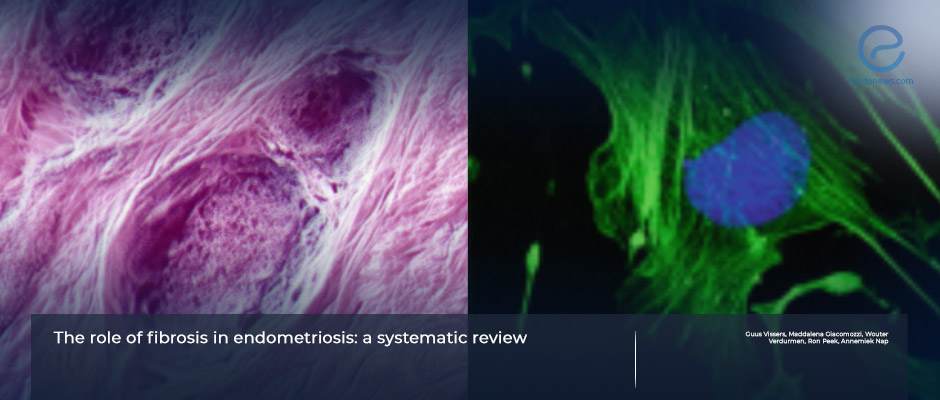Understanding Fibrosis in Endometriosis
Oct 2, 2024
Fibrosis in Endometriosis: Insights from a Systematic Review
Key Points
Highlights:
- Fibrosis, or the formation of scar tissue, is a key cellular process in chronic inflammation.
- This characteristic feature of chronic inflammation is also a significant factor in all subtypes of endometriosis.
Importance:
-
Therapeutic strategies aimed at preventing or reducing fibrosis may be beneficial for fibrotic endometriotic lesions.
What's done here:
- A systematic search in thee biyomedical databases using terms "endometriosis" and fibrosis related words, revealed 142 studies relevant for further assessment.
Main key feature:
-
Platelets and TGF-B play a significant role in signaling during the prefibrotic phase.
-
In addition to contributing to painful symptoms of endometriosis, nerves and neuropeptides act as important promoters of fibrosis.
Limitations:
- A significant portion of the studies analyzed in this review utilizes animal models of endometriosis.
- Some non-English language studies were excluded, and a few others were unavailable in their full text.
- One unanswered question is the impact of newly developed anti-fibrotic therapies on existing endometriosis.
Lay Summary
Fibrosis is a crucial aspect of endometriosis, present in and around endometriosis lesions. It mainly arises from myofibroblasts—cells that transform through specific processes. Fibroblast-to-myofibroblast transdifferentiation, epithelial-to-mesenchymal transition, and, to a lesser extent, endothelial-to-mesenchymal transition are sources of myofibroblasts in endometriosis.
The growth factor TGF-β is key in this transformation. Myofibroblasts not only create a stiff environment by depositing a matrix but may also contribute to the pain, so many patients experience. Interestingly, the fibrosis seen in endometriosis resembles that of other fibrotic diseases, suggesting that targeting this fibrosis could lead to new non-hormonal treatments.
A review recently published in Human Reproduction Update by Vissers and collegues from the Department of Obstetrics & Gynaecology and Medical BioSciences of Radboud University Medical Center, Nijmegen, The Netherlands, is recently published that aims to shed light on the role of fibrosis in endometriosis and identify knowledge gaps, paving the way for more focused research.
The authors conducted a systematic literature review across three biomedical databases using keywords related to endometriosis and fibrosis, in which both preclinical studies and human research, 142 studies that discussed fibrosis, which had a moderate to high risk of bias were included.
This comprehensice review highlights the central role of myofibroblasts and TGF-β in fibrosis related to endometriosis. The presence of nerves and neuropeptides in these lesions is likely linked to pain. Notably, the fibrotic processes in endometriosis share traits with other diseases but show unique connections with nerves, opening up exciting avenues for future treatments.

